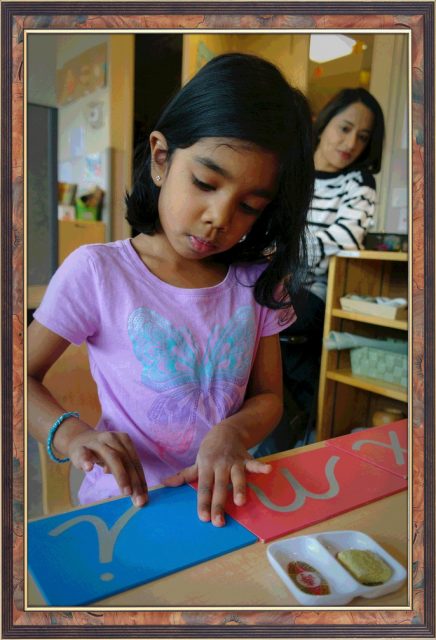
The prepared Montessori environment is a sight to behold. In an authentic Montessori school, a Casa classroom is the stage on which boys and girls develop a sense of responsibility, cooperation and independence. The people on this stage however are not actors, they are children who are developing a legitimate love of learning.
At scheduled times twice a year, parent-teacher conferences are held to discuss the children’s progress. A week prior to these conferences, parents are invited to sign up for a time slot (usually half an hour) during Observation Week. At this time, parents are able to observe the classroom during the work cycle. Although this is only a “snapshot” of a child’s typical day, observing not only the child but also the classroom setting as a whole often provides useful insight which aids in the parent-teacher dialogue during the conference meeting.
In order to get as a clear a picture as possible of what the work cycle is like in a Montessori classroom, the parents are provided a handout prior to their observation in order to prepare them for what they can expect and how to navigate their experience in the classroom.
In the classroom, the parents seat themselves in adult-sized observation chairs provided and become “invisible”. While sitting down, children may approach the parents. In this case, parents are advised to respond with a polite “Hello” and to avoid encouraging further conversations so that the children may return to their work. Depending on the circumstances and a child’s age, parents are prompted to take into consideration that it is also normal for the children to respond differently to having their parents in the classroom. For this reason, it is highly suggested to observe the classroom as a whole rather than comparing their child’s academic progress or behaviour with their peers. At the end of the scheduled observation time, parents extend a brief and positive goodbye to their child and leave the classroom quietly.
For a successful Montessori classroom observation, parents are invited to try to observe several aspects and interaction within the environment. It is recommended to alternate their visual perspective between a wide-angle view of the entire classroom and a close up of their own child. At the same time, it is meaningful for parents to try isolating the different learning styles that the children employ such as an individual focused learning versus a group cooperative learning. The teacher-child interaction as well as child-child interaction will help them better understand the general support, attitude and level of respect toward one another and the social climate in the Montessori classroom. Lastly, it is essential to observe evidence of independence regarding initiating own work and completing an activity.
Whether parents are observing for the first time or have observed previously, classroom observations can increase their appreciation of the Montessori method of education and can answer questions regarding their child’s day at school, thus making it a truly rewarding experience!

